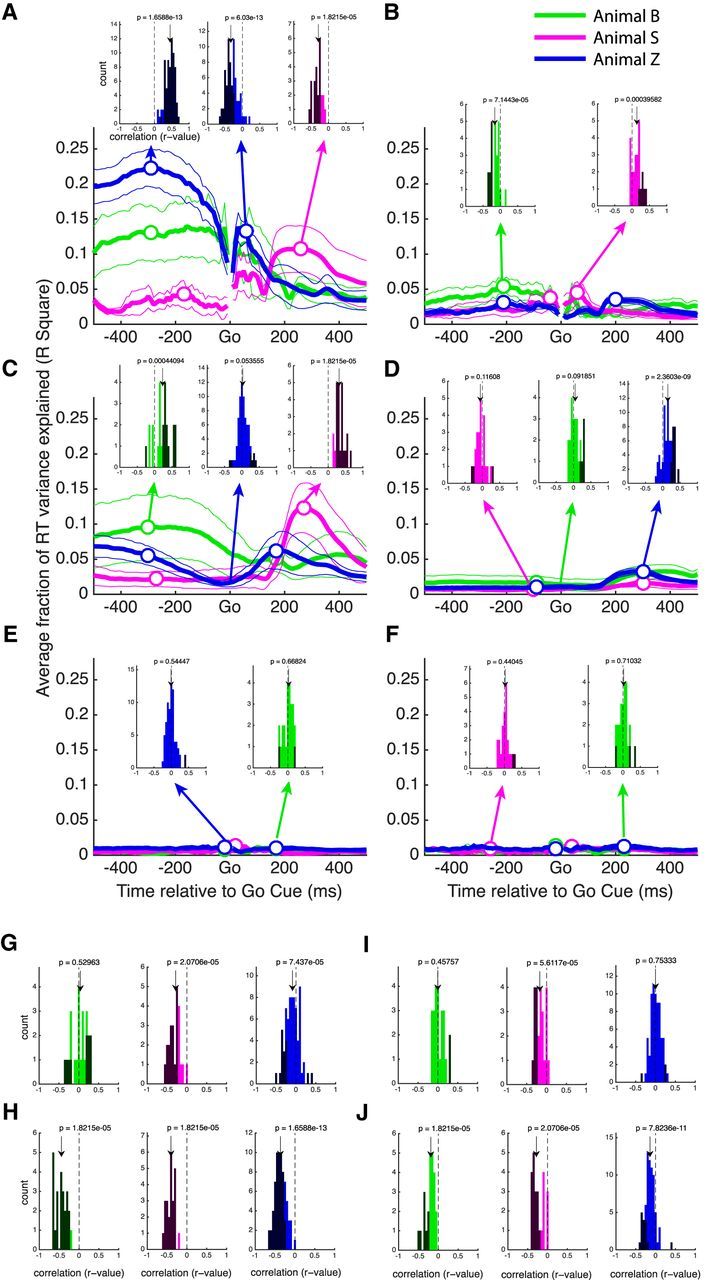Figure 4.

Determination of the optimal reference time (Δt) relative to go cue on the mean trajectory. A, B, Results of the projection method in areas F5 and AIP, respectively. C, D, Results of the Euclidean distance method in areas F5 and AIP, respectively. E, F, Results of the velocity projection method in areas F5 and AIP, respectively. Thick traces are the mean of all conditions and datasets of each animal, thin traces are the SEM, and white circles are the optimal Δt used in all subsequent analysis. Insets in A–F show histograms of correlation coefficients between each neural predictor and RT over all conditions (2–6), datasets (6), and cross-validation folds (2). Black bars denote correlations with a p value <0.05. Arrows show the median together with the p value of significant difference from zero (Wilcoxon's signed-rank test). G, H, Correlation coefficient histograms of the AR at go method and the SCAR method, respectively, in F5. I, J, Same as G and H, but for neural data from AIP.
